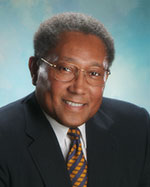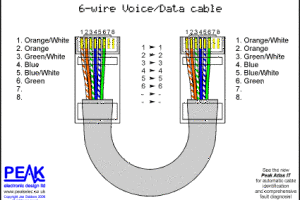Structured Cabling System
Proper grounding and bonding ensures the safety of personnel and the protection of equipment. However, in the healthcare environment, protecting the equipment which supports patient monitoring and life support makes it again a safety issue. Coordination between electrical and telecommunications bonding and grounding systems is essential during design and installation of structured cabling, because bonding and grounding systems within a building shall have one electrical potential. The best way to coordinate these efforts is to follow industry-established codes and standards that you you should be familiar with as well as recent developments that affect all designers and installers. Here is a quick rundown of these codes and standards.
The first code to consider is the National Electrical Code (NEC), which addresses bonding and
grounding as minimum requirements for life safety. While ensuring personnel safety is the highest priority, it was realized in the late 1980s and early 1990s that the electrical grounding requirements, while protecting end-users, were not protecting the end-user’s expensive electronic (IT) equipment. This concern was addressed by developing grounding bonding standards. While being similar to a code, which is adopted by local states and municipalities into law, the use of a standard is voluntary. It may become a requirement for any given project, if the building owner or designer/engineer lists it as such in the construction documents.
There were a couple early standards, the first being IEEE 142, Recommended Practice for
Grounding of Industrial and Commercial Power Systems (the Green Book) when Chapter 5 was added in the 1991 edition – Electronic Equipment Grounding. This addition addressed improved bonding and grounding practices for the power systems serving information technology (IT) equipment. The IEEE followed up with IEEE Standard 1100, Recommended Practice for Powering and Grounding Electronic Equipment (the Emerald Book) in 1992. This addition explained the issues with poor power quality, lightning, and other surges and different ground potentials on metallic data cabling.
In 1994, the Telecommunications Industry Association (TIA) and the Electronic Industries Association (EIA) published ANSI/TIA/EIA-607, Commercial Building Grounding and Bonding Requirements for Telecommunications, which established the need for a dedicated telecommunications grounding and bonding system. The ANSI/TIA/EIA standard was revised in 2002 to become ANSI-J-STD-607-A, Commercial Building Grounding (Earthing) and Bonding Requirements for Telecommunications. The standard at this time only addressed the connections from the electrical ground to the busbar in each telecommunications space — the connection from the busbar to the equipment was still missing. To address the issue of quality, NECA and BICSI developed a joint standard, ANSI/NECA/BICSI-607, Standard for Telecommunications Bonding and Grounding Planning and Installation Methods for Commercial Buildings, published in 2011. From a planning perspective, this standard specifies bonding to a telecommunications rack and includes bonding and grounding information for data centers.
Developed by the TIA TR-42.16 Grounding and Bonding Subcommittee and published on August 26, 2012, ANSI/TIA-607-B, Generic Telecommunications Bonding and Grounding (Earthing) for Customer Premises is the most encompassing telecommunications standard for bonding and grounding. Its requirements are for “generic” premises rather than for just a commercial building, and its purpose is to enable and encourage the planning, design, and installation of generic telecommunications bonding and grounding systems within premises. While primarily intended to provide direction for the design of new buildings, this standard may be used for existing building renovations or retrofits. In addition, design requirements and choices are provided. This enables the communications infrastructure designer to make informed design decisions.
 |
William B. Buckingham, is a Registered Communications Distribution Designer (RCDD). Over 24 years of knowledge and experience in the telecommunications industry, with a broad background in cable plant design, project management and installation. William B. Buckingham, RCDD bbuckingham@internet49.com (916) 616-9598 |




